
Roots
The whisper of moisture, a yearning often felt but seldom truly understood when it comes to our hair, particularly textured strands. For generations, stories have passed through hands and combs, tales of resilience, beauty, and the unending quest for softness. Yet, beyond the ancestral wisdom and personal anecdotes, a deeper question quietly awaits ❉ can the consistent methods we apply truly alter hair’s inherent capacity for hydration over time?
This query invites us to look beyond the surface shimmer, to delve into the very architecture of our hair, and to consider whether our devoted practices can indeed reshape its fundamental relationship with water. It is a contemplation that begins at the very root, exploring the elemental truths that govern every curl, coil, and wave.
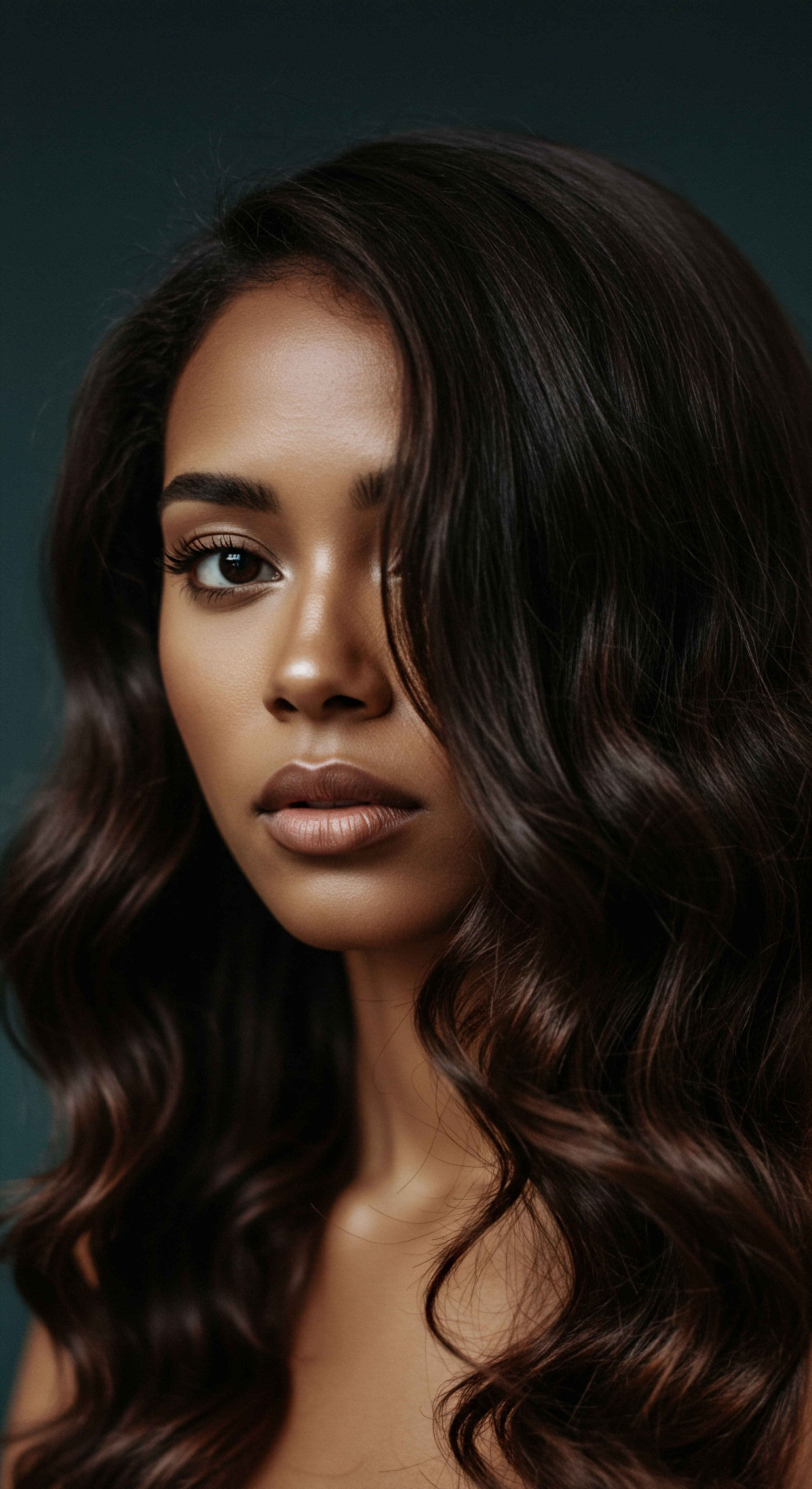
The Hair’s Intimate Structure
Each strand of hair, seemingly simple, is a marvel of biological engineering. At its core lies the Medulla, a soft, sometimes absent, central canal. Surrounding this is the Cortex, the primary determinant of hair’s strength, elasticity, and color, composed of tightly packed keratin fibers. It is within the cortex that the hair’s capacity to absorb and retain water largely resides, influencing its plumpness and flexibility.
The outermost layer, the Cuticle, acts as the hair’s protective shield. Comprising overlapping, scale-like cells, the cuticle’s integrity directly impacts how well moisture can enter and remain within the strand. When these scales lie flat and smooth, the hair feels soft and appears lustrous; when they are raised or damaged, moisture escapes more readily, leading to dryness and fragility.
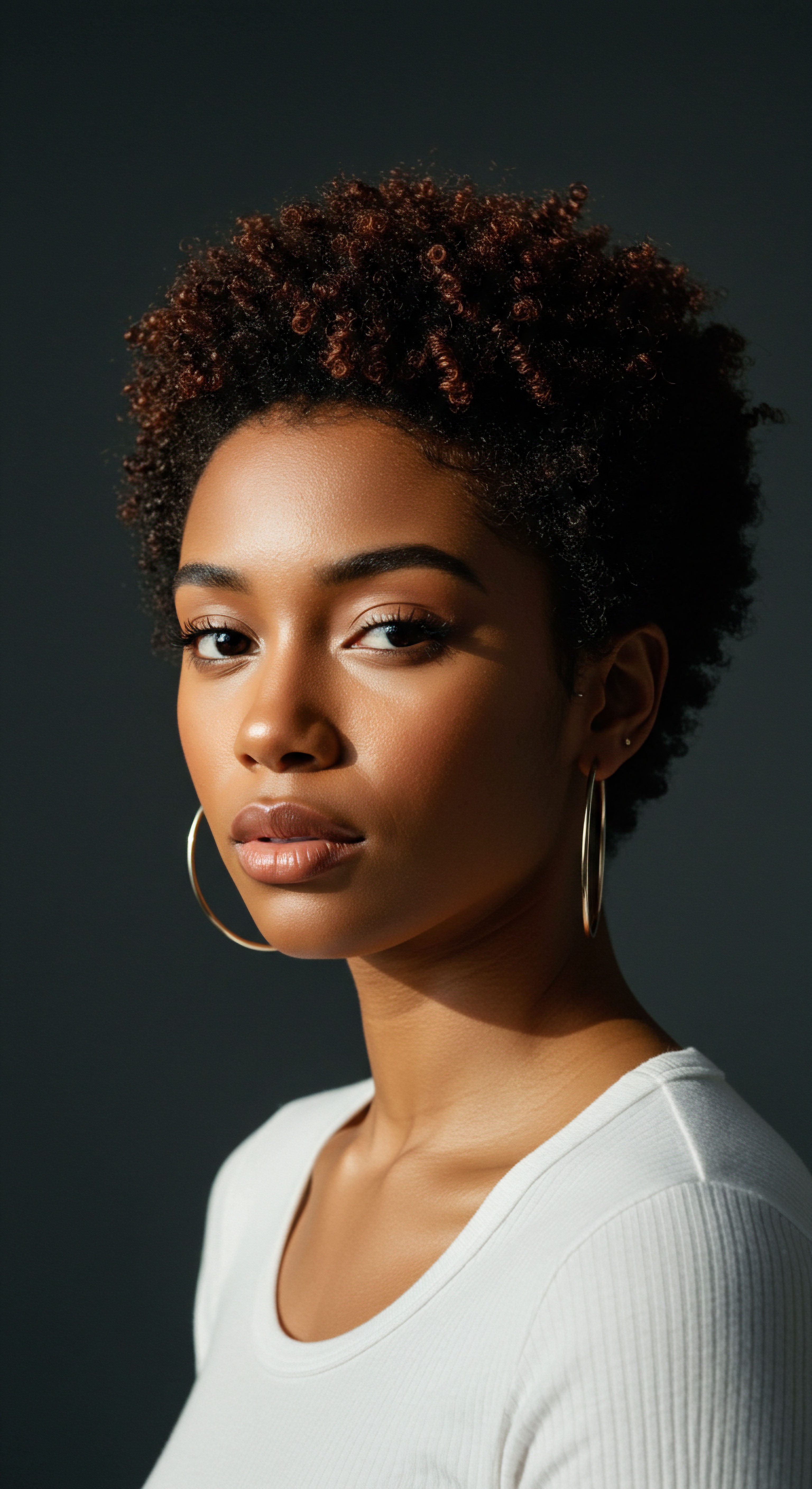
How Does Hair Drink Water?
The process of hair hydration is not unlike a gentle imbibing. Water molecules are drawn into the hair through a process known as Osmosis and diffusion, passing through the cuticle layers into the cortex. The hair’s natural humectants, often amino acids and urea, play a significant role in attracting and holding onto this water. The ability of hair to ‘drink’ is largely determined by its porosity, which refers to the cuticle’s condition.
Hair with low porosity has tightly bound cuticles, making it resistant to moisture absorption but also slow to release it. High porosity hair, conversely, has raised or damaged cuticles, allowing water to enter quickly but also to escape with similar ease.
Hair’s capacity for hydration is fundamentally linked to the intricate structure of its cuticle and cortex, dictating how moisture is absorbed and retained.

The Genesis of Hair Health
From the moment a hair strand emerges from the scalp, its inherent characteristics are largely determined by genetics. The shape of the follicle dictates the curl pattern, influencing how oils travel down the strand and how light reflects, creating varied appearances. However, this genetic blueprint is not an unchangeable destiny. Environmental factors, internal health, and crucially, external care methods begin to sculpt the hair’s reality from its earliest days.
The scalp, often overlooked, serves as the nurturing ground for hair growth. A healthy scalp environment, balanced in its microbiome and free from excessive inflammation, supports the optimal development of hair follicles, laying a strong foundation for robust strands capable of better moisture regulation.
- Follicle Shape ❉ Determines curl pattern, impacting natural oil distribution.
- Cuticle Integrity ❉ Governs moisture absorption and retention, a direct measure of hair health.
- Scalp Health ❉ Provides the foundational environment for hair growth, influencing strand vitality.
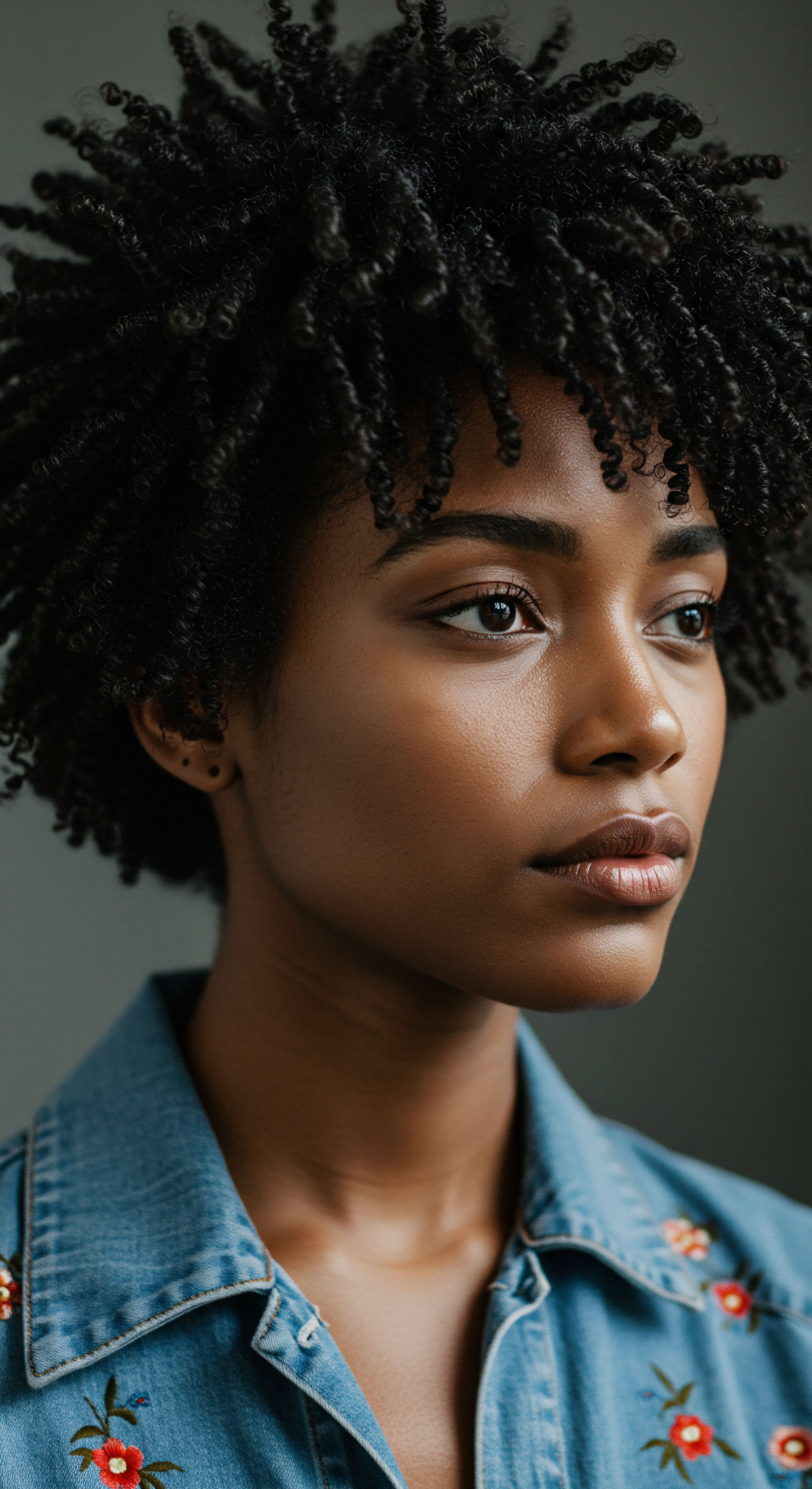
Can Hair’s Natural Porosity Change Over Time?
This is a question that often arises, carrying with it a hope for transformation. While the fundamental genetic predisposition for porosity remains, the hair’s effective porosity can indeed shift. Chemical treatments, such as coloring, relaxing, or perming, forcibly lift the cuticle, increasing porosity. Similarly, excessive heat styling without proper protection can cause thermal damage, creating micro-fractures in the cuticle and leading to higher porosity.
Mechanical damage, from aggressive detangling to constant friction, also contributes to cuticle wear and tear. Therefore, while you may be born with a certain porosity tendency, the methods you employ daily can either preserve or compromise your hair’s ability to hold moisture.
| Hair Layer Medulla |
| Primary Function Central core (sometimes absent) |
| Impact on Hydration Minimal direct impact |
| Hair Layer Cortex |
| Primary Function Strength, elasticity, color |
| Impact on Hydration Primary water reservoir |
| Hair Layer Cuticle |
| Primary Function Protective outer layer |
| Impact on Hydration Regulates moisture entry and exit |
| Hair Layer The health of each layer contributes to the hair's overall moisture balance. |

Ritual
Stepping from the foundational truths of hair anatomy, we arrive at the realm of daily interaction, the rhythmic dance of care methods that shape our strands. The question of whether consistent care truly alters hair’s long-term capacity for hydration moves from theory to practice here. It acknowledges that hair, like a delicate plant, responds to its environment and the tending it receives.
This section guides us through the practical wisdom, the repeated gestures, and the thoughtful choices that collectively build a lasting relationship with our hair’s moisture needs. It is about understanding that each wash day, each styling session, and each nightly routine holds the potential for profound impact, moving beyond fleeting results to sustained wellness.
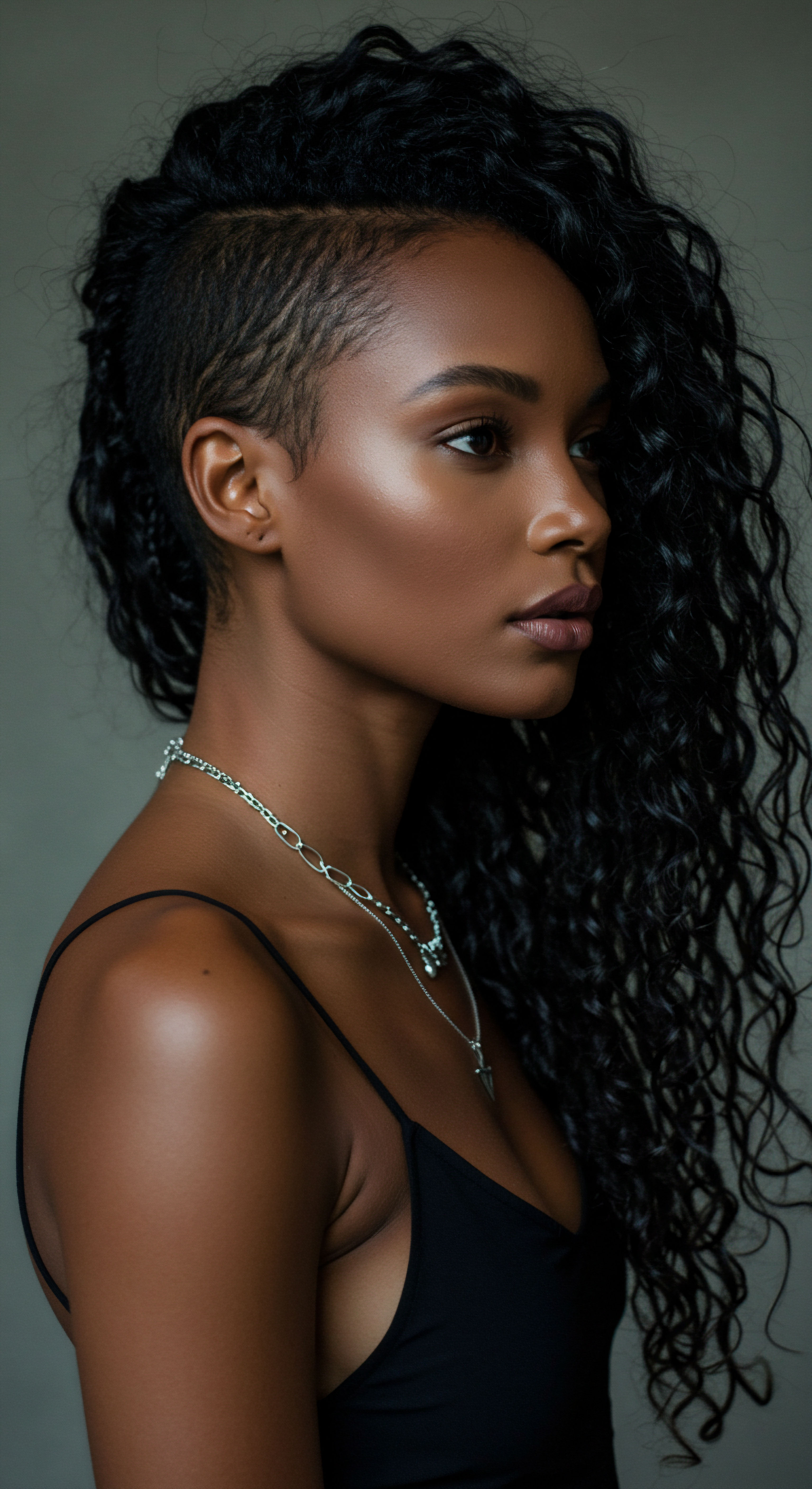
The Practice of Cleansing and Conditioning
The cornerstone of any hair regimen begins with cleansing. For textured hair, this process demands particular thoughtfulness. Harsh sulfates can strip the hair of its natural oils, leaving it parched and vulnerable. Opting for gentle, sulfate-free cleansers helps preserve the hair’s delicate lipid barrier, which is essential for maintaining moisture.
Following cleansing, conditioning is paramount. Conditioners work by smoothing the cuticle, detangling strands, and depositing humectants and emollients that attract and seal in water. The consistent application of a rich, hydrating conditioner, allowed to sit for several minutes, can significantly improve the hair’s immediate softness and pliability. Over time, this practice helps reinforce the cuticle, making it more resilient against moisture loss.
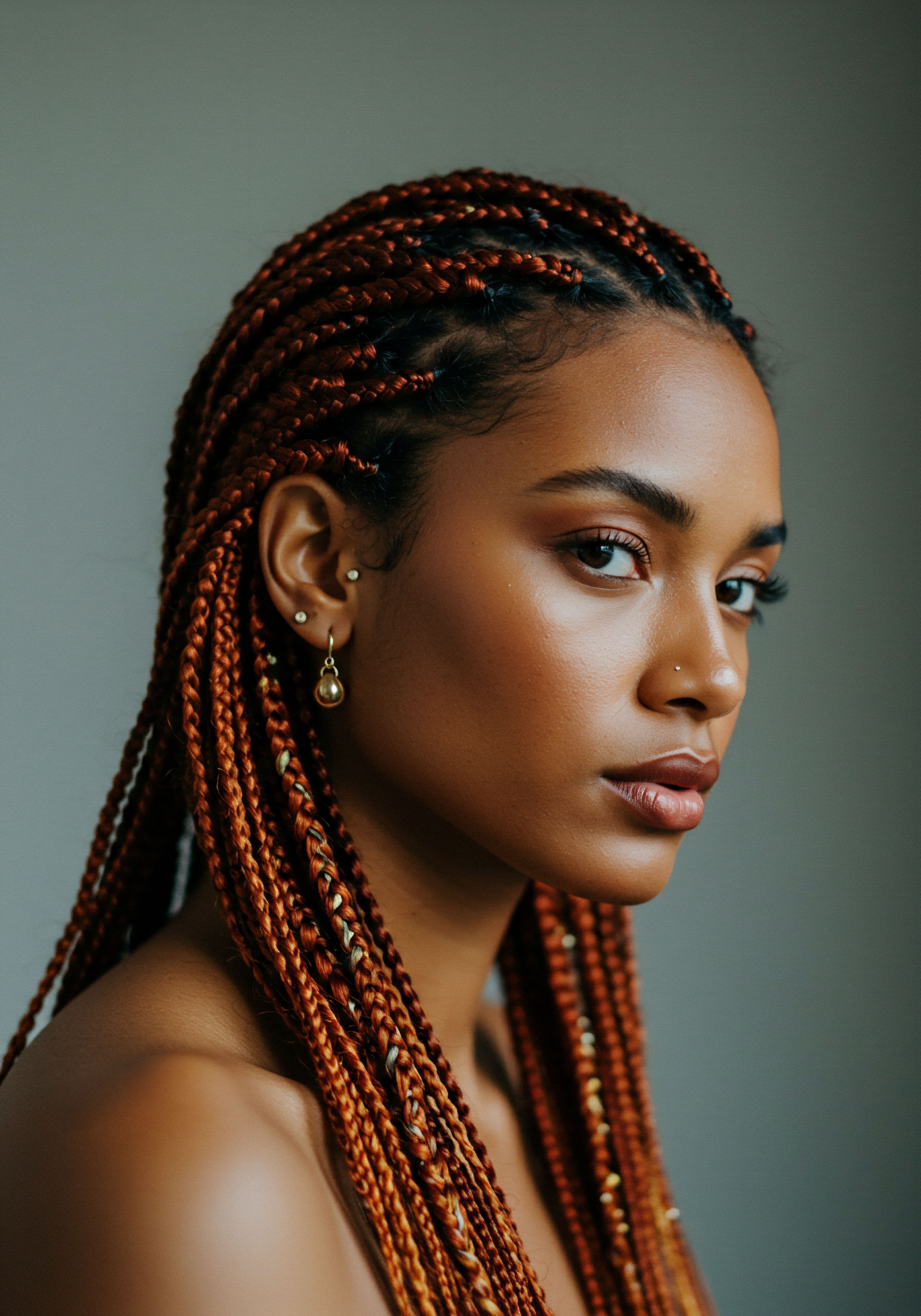
How Do Deep Conditioning Treatments Affect Hydration?
Deep conditioning treatments represent a more intensive commitment to hydration. Unlike daily conditioners, these formulations are designed to penetrate deeper into the hair shaft, delivering a concentrated dose of moisturizing agents, proteins, and lipids. Regular deep conditioning, typically once a week or bi-weekly, can yield remarkable improvements in hair’s moisture retention.
A study published in the International Journal of Cosmetic Science explored the effects of various conditioning treatments on hair fibers, finding that formulations rich in specific emollients and humectants significantly enhanced the mechanical properties of hair, leading to reduced breakage and improved elasticity, both indicators of better hydration status. This suggests that consistent, targeted treatments do more than just provide temporary relief; they contribute to the hair’s structural integrity, allowing it to hold onto water more effectively over an extended period.
- Gentle Cleansing ❉ Preserves natural oils and the hair’s lipid barrier.
- Regular Conditioning ❉ Smooths cuticles and deposits hydrating ingredients.
- Deep Conditioning ❉ Delivers concentrated moisture, improving hair’s structural integrity.

Sealing and Protection
Beyond cleansing and conditioning, the methods used to seal in moisture are critical. The “LOC” or “LCO” method (Liquid, Oil, Cream or Liquid, Cream, Oil) is a widely adopted practice in textured hair care. This layering technique helps to trap the water introduced during washing and conditioning, creating a protective barrier against environmental dryness.
The liquid (water or a leave-in conditioner) provides the hydration, the oil helps to seal it in, and the cream offers further moisture and definition. Consistent application of these sealing agents prevents rapid moisture evaporation, allowing the hair to remain hydrated for longer periods.
Layering moisture-sealing products after cleansing and conditioning can significantly prolong hair’s hydration, creating a protective barrier.
Protection from external aggressors also plays a significant role in preserving hydration. This includes minimizing heat styling, which can cause significant cuticle damage and lead to increased porosity. When heat is unavoidable, the use of a high-quality heat protectant creates a buffer between the heat source and the hair strand, mitigating damage.
Similarly, protective styles that tuck away the ends of the hair, such as braids, twists, or buns, reduce exposure to friction and environmental elements, helping to maintain moisture levels and prevent breakage. These consistent protective measures cumulatively contribute to the hair’s overall health and its ability to retain hydration.
| Technique Sulfate-Free Cleansing |
| Purpose Removes dirt without stripping oils |
| Long-Term Benefit Maintains natural lipid barrier |
| Technique Leave-In Conditioner |
| Purpose Provides initial hydration |
| Long-Term Benefit Base for moisture layering |
| Technique Oil Sealing |
| Purpose Locks in moisture |
| Long-Term Benefit Reduces evaporation |
| Technique Cream Application |
| Purpose Adds moisture and definition |
| Long-Term Benefit Enhances lasting hydration |
| Technique Heat Protectant |
| Purpose Shields from thermal damage |
| Long-Term Benefit Preserves cuticle integrity |
| Technique Consistent application of these methods supports sustained hair hydration. |

Relay
Moving beyond the immediate actions of care, we arrive at a deeper consideration ❉ the profound, interconnected influences that truly shape hair’s enduring capacity for hydration. This is where the scientific converges with the cultural, where individual practices meet broader historical currents. Can consistent care methods truly alter hair’s long-term capacity for hydration? The answer, in this more expansive view, is not a simple yes or no, but a symphony of contributing factors.
It is about recognizing that our hair’s relationship with moisture is not static, but a dynamic dialogue between internal states, external environments, and the cumulative legacy of our choices. This section delves into the less obvious, yet profoundly impactful, dimensions of hair hydration, drawing connections that span beyond the immediate product application.

The Microbiome of the Scalp and Hair
The scalp, often treated as a mere foundation for hair, is a complex ecosystem teeming with microorganisms – bacteria, fungi, and mites – collectively known as the Scalp Microbiome. This microscopic community plays a significant, though often overlooked, role in hair health and, by extension, its hydration capacity. A balanced microbiome contributes to a healthy scalp barrier, which is crucial for preventing trans-epidermal water loss from the scalp itself. When the scalp barrier is compromised, either by harsh products, environmental stressors, or imbalances in the microbiome, it can lead to inflammation, dryness, and a less-than-ideal environment for hair growth.
This can indirectly affect the quality of new hair emerging, potentially impacting its ability to retain moisture. Research is increasingly pointing to the intricate connection between a healthy scalp microbiome and the overall vitality of the hair fiber, suggesting that consistent care methods which support this delicate balance contribute to a more robust, naturally hydrated strand.

Does the Hair’s Historical Context Affect Its Hydration Needs?
To understand textured hair’s hydration capacity, one must also acknowledge its historical and cultural context. For centuries, textured hair has been subject to specific societal pressures and often, to practices that were not always in its best interest. The widespread use of harsh chemical straighteners, for instance, significantly altered the hair’s structural integrity, causing irreversible cuticle damage and dramatically increasing porosity. This historical legacy means that for many, the journey to healthy, hydrated hair is not simply about current product choices, but also about repairing damage accumulated over generations, or at least understanding its enduring effects.
The shift towards natural hair movements and the celebration of coils and curls represents a collective healing, a conscious choice to adopt care methods that honor the hair’s inherent structure rather than fight against it. This cultural awakening, leading to consistent, gentle care, undeniably improves the hair’s long-term moisture retention, not just for individuals but for a collective understanding of hair wellness.
The historical journey of textured hair, often marked by harsh treatments, underscores how collective care practices can profoundly influence its long-term hydration capacity.

Beyond the Bottle ❉ Internal Influences on Hydration
While external care methods are visible and actionable, the hair’s long-term capacity for hydration is also profoundly shaped by internal factors. Our overall health, diet, and even stress levels manifest in the condition of our hair. A diet rich in essential fatty acids, vitamins (particularly B vitamins, Vitamin A, C, and E), and minerals (like zinc and iron) provides the building blocks for healthy hair growth.
These nutrients support the production of keratin, the primary protein of hair, and contribute to the health of the sebaceous glands, which produce the natural oils that coat and protect the hair. Chronic stress, on the other hand, can disrupt hormonal balance, potentially leading to issues like telogen effluvium (temporary hair shedding) and generally impacting the vitality of hair, making it appear dull and dry.
Consider the impact of systemic conditions. For example, certain thyroid imbalances can lead to dry, brittle hair, regardless of external moisturizing efforts. Similarly, nutritional deficiencies, even subclinical ones, can compromise the hair’s ability to retain moisture. Therefore, a truly holistic approach to hair hydration involves consistent external care paired with a mindful approach to internal well-being.
The sustained dedication to a balanced lifestyle, incorporating proper nutrition and stress management techniques, works in tandem with topical applications to optimize the hair’s intrinsic ability to draw in and hold onto water, transforming its capacity over the long haul. This interplay underscores that consistent care is not just about what we apply, but how we live, creating a powerful relay between inner harmony and outer radiance.
- Dietary Choices ❉ Provide essential nutrients for keratin production and healthy oil secretion.
- Stress Management ❉ Prevents hormonal imbalances that can affect hair vitality.
- Hydration Intake ❉ Ensures sufficient water for cellular functions, including hair growth.
- Systemic Health ❉ Addresses underlying conditions that may impact hair moisture.
| Factor Type External Care |
| Specific Influence Product selection, application techniques, protective styling |
| Impact on Hydration Directly influences moisture absorption and retention |
| Factor Type Internal Health |
| Specific Influence Nutrition, hydration, stress levels, systemic conditions |
| Impact on Hydration Affects hair fiber quality and oil production |
| Factor Type Environmental |
| Specific Influence Humidity, pollution, UV exposure |
| Impact on Hydration Can cause moisture loss or damage |
| Factor Type Genetic |
| Specific Influence Follicle shape, inherent porosity tendency |
| Impact on Hydration Establishes foundational hair characteristics |
| Factor Type Historical/Cultural |
| Specific Influence Past treatment practices, societal beauty standards |
| Impact on Hydration Shapes collective and individual hair journeys |
| Factor Type A multi-dimensional approach considers all these elements for sustained hair hydration. |

Reflection
The question of whether consistent care methods truly alter hair’s long-term capacity for hydration unfolds into a layered understanding. It is clear that while our hair arrives with its own inherent blueprint, it is also a living, responsive entity, profoundly shaped by the care it receives, the environment it inhabits, and the wellness within. The daily rituals, the thoughtful product choices, the protective gestures, and the deeper consideration of our overall health all contribute to a cumulative effect.
Hair, particularly textured hair, responds to a gentle, knowledgeable hand, gradually improving its ability to hold onto the life-giving essence of water. This journey is not a quick fix, but a sustained conversation, a quiet dedication that, over time, reveals the profound beauty of hair truly at peace with its own nature, capable of holding its serene moisture.

References
- 1. Dias, M. F. R. G. et al. “Hair Cosmetics ❉ An Overview of the Market and the Main Active Compounds.” International Journal of Cosmetic Science, vol. 37, no. 5, 2015, pp. 467-476.
- 2. Robbins, C. R. Chemical and Physical Behavior of Human Hair. 5th ed. Springer, 2012.
- 3. Trueb, R. M. “Pharmacologic interventions in hair diseases.” Clinical Dermatology, vol. 27, no. 1, 2009, pp. 28-36.
- 4. Draelos, Z. D. Cosmetic Dermatology ❉ Products and Procedures. 3rd ed. Wiley-Blackwell, 2015.
- 5. Yu, J. et al. “Scalp Microbiome and Hair Health ❉ A Review.” Journal of Cosmetic Science, vol. 71, no. 3, 2020, pp. 139-148.
- 6. Van Neste, D. “The Hair Follicle as a Model for Stem Cell Biology and Regenerative Medicine.” Current Stem Cell Research & Therapy, vol. 4, no. 2, 2009, pp. 102-110.